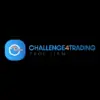A Forex trading system is a set of rules and guidelines, you can use to outline when to enter or exit trades, what to trade, and how to manage risks. Such systems range from simple strategies to complex algorithms, all aiming to help you make informed trading decisions.
One such system is the Forex Octave System, an innovative tool designed to assist traders in monitoring the markets and making the best trading strategies. Here we will look at the system, how it works, and how to mitigate risks when using the system.
How does the Forex Octave System work?
As the name suggests, the Forex Octave System is based on the concept of octaves, which are specific price levels or ranges in the Forex market. It is based on octave levels, which are key price levels (octaves) based on historical data and the levels act as potential support or resistance areas.
The system is similar to the Murrey Math Harmonic Octave, a different trading system that also utilizes octaves. It automatically determines where to set key levels (such as 0/8ths and 8/8ths) based on specific market data.
Key Features of the Forex Octave System
The main goal of the Forex Octave System is to offer you a systematic way to spot trading chances in the forex market, by blending technical indicators with price action analysis and risk management techniques to ensure steady profitability. Key features of the system include the following.
Automated Alerts
When you use the Forex Octave system, you will receive automated alerts when the price approaches or crosses these octaves. These alerts help them make informed decisions.
Technical Indicators
In general, the system combines multiple technical indicators like moving averages, oscillators (such as MACD or RSI), and Fibonacci levels. These indicators are essential for determining potential entry and exit points based on the signals they provide.
Price action analysis
Understanding price movements and patterns on charts is a key focus. This includes recognizing important support and resistance levels, chart patterns such as triangles or double tops/bottoms, and candlestick formations.
Timeframe analysis
When you use the Forex Octave System, you often assess multiple timeframes (e.g., 1-hour, 4-hour, daily) to validate signals and harmonize trades with broader market trends. This approach helps in sieving out unnecessary information and focusing on trades with higher probabilities of success.
Risk Management
It’s really important to use proper risk management techniques in the system. This means placing stop-loss orders to control potential losses, adjusting position sizes based on account size, and sticking to disciplined trading rules.
Adaptability
This system is designed to be flexible enough to work in a variety of market situations and with different currency pairs, allowing you to take advantage of both trending and ranging markets. It’s common for traders to personalize parameters and rules to suit their own trading styles.
Education and support
You may receive educational materials and support from different sources when using the Forex Octave System to understand its principles and implement it effectively.
Overall, the Forex Octave System aims to provide traders with a structured approach to identifying trading opportunities in the forex market, combining technical indicators with price action analysis and risk management principles to achieve consistent profitability.
Incorporating the Forex Octave System into an existing strategy
There are several ways you can integrate the octave system into your trading strategy.
- Research: Familiarize yourself with octaves and their relevance to forex markets. This understanding will enable you to see how alerts are triggered by octave levels.
- Customization: Tailor the system’s default settings to suit your risk tolerance, trading approach, and time horizons, and modify the octave levels or add additional filters.
- Backtesting: Test the system with past data to see how well it performs. Evaluate how effective it is in various market situations.
- Risk management: Decide on your approach to managing risk while addressing system alerts. Put in place stop-loss and take-profit levels.
- Real-time implementation: Keep an eye on the alerts produced by the system. Integrate them with your current technical analysis and additional indicators.
Every system has its flaws, so being a successful trader means constantly learning, adapting, and managing risks.
Common pitfalls to avoid when using the Forex Octave System
When using the Forex Octave System, here are some common pitfalls to avoid:
- Over Reliance on alerts: While automated alerts have their benefits, it’s wise to not rely on them exclusively. It’s better to use them alongside other technical analysis tools and your own critical thinking. Don’t expect every alert to make you money. Be choosy and wait for the right opportunity.
- Ignoring current market context: Octaves are influenced by the context in which they are viewed. It’s essential to factor in overall market trends, news events, and economic data when assessing octave levels.
- Lack of risk management techniques: Set the stop-loss and take-profit levels at the right points. Always be careful not to risk more than you can afford to lose.
- Don’t neglect backtesting: Set your stop-loss and take-profit levels at the right positions. Just be cautious not to risk more than you can afford to lose.
Successful trading requires a well-rounded approach, ongoing education, and the ability to adapt.
Common Forex Octave System challenges
Using the Forex Octave System comes with several challenges:
False signals: Just like with any trading system, there’s a chance of false alerts. Traders should be diligent in filtering out the noise and double-checking signals with more analysis.
Market volatility: Sudden price movements can throw off octave levels. It’s crucial to make adjustments for volatility.
Changing market conditions: The system works differently depending on the market phase (trending, ranging, or volatile).
Risk management: Many traders ignore the importance of risk management, which often results in financial losses. It’s crucial to establish stop-loss and take-profit levels.
Fine-tuning the Forex Octave System to reduce false alerts
To reduce false alerts in the Forex Octave System, consider the following strategies:
- Adjust octave levels: Try out various octave settings. Smaller octaves could help decrease incorrect signals, but make sure you don’t overlook any valid ones.
- Add filters: Incorporate other technical indicators such as moving averages or RSI to verify or enhance system alerts. Use candlestick patterns or trend lines alongside octave levels.
- Consider market volatility: Be aware of market volatility. Adjust octave levels based on current volatility conditions.
- Confirm timeframes: Use both daily and hourly timeframes to validate alerts. A signal that coincides across different timeframes is more credible.
- Avoid overfitting: Try not to tweak the system too heavily using old data. Overfitting can result in inaccurate positive outcomes.
Continuously adapt the system to your trading strategy to mitigate risk and ensure success.
Risk management techniques when trading with the Forex Octave System trading
When implementing octave-based trading strategies, effective risk management is crucial. Here are some techniques to consider:
Position sizing
Always consider your account balance when deciding on the trade size. Be cautious not to overexpose yourself in a single trade. Utilize a consistent percentage of your capital, such as 1% to 2%, for every trade.
Use stop-loss orders
Place your stop-loss levels according to octave levels or other technical indicators. It’s important to stick to your pre-set stop-loss, even if you feel tempted to ignore it because of emotions.
Set take-profit targets
Establish profit targets using octave levels or other indicators, and take your profits when the price reaches your goal.
Ensure a risk-reward ratio
Strive for a positive risk-reward ratio (such as 1:2 or greater). Assess the potential reward in relation to the risk taken.
Diversify
Make sure you’re not putting all your trades into just one currency pair or instrument. Spread out your investments across different assets to lower the risk.
Avoid revenge trading
After a loss, resist the urge to seek revenge through trading. Stay committed to your trading plan and strategy.
Keep in mind that managing risk is all about protecting your capital and ensuring you can keep trading in the long run. Make sure to adjust these strategies to match your own risk tolerance and trading approach.
Real-world scenarios of the Forex Octave System
While the Forex Octave System doesn’t have universal success, some traders have found it useful in specific scenarios:
- Trend reversals: By monitoring when a currency pair gets close to a key octave level and then turns around, traders can spot trend reversals quickly using the system.
- Identify breakouts above resistance or rebounds off support levels (octaves). Traders may choose to enter or exit positions according to these price movements.
- Apply scalping. Scalping works with short timeframes and depends on fast price movements. The alerts from the system can be really helpful for setting up scalping trades.
- Combining it with other indicators. Blending the Forex Octave system with other technical indicators such as moving averages and Fibonacci retracements to validate successful trading decisions.
Final Thoughts
The Forex Octave System helps traders identify trends in the forex market by combining technical indicators and analyzing price action. To succeed with this system, it’s important to grasp its intricacies, trade with discipline, and adjust to changing market conditions. Traders frequently tailor these systems to suit their unique trading preferences and risk levels.











